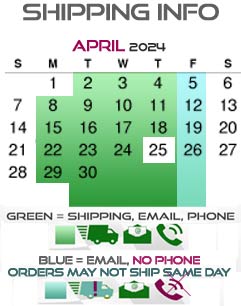Extreme care was taken in writing this please ensure you read your current rules before venturing into rebuilding your own engines
Enjoy
Rebuilding a Yamaha J and s
Measuring the port spread
Using an old ring and a piston to slide the ring up and down the bore (This helps to get a more accurate measurement pushing the ring down the bore evenly with digital veneers.
Measuring from the top of the exhaust port to the bottom of the inlet port.
Insert the ring into the bore pushing it down the bore to when you see the ring level with the top of the exhaust port (take this measurement down).
Now push the ring down further, now looking through the inlet port until the ring is level with the bottom of the exhaust port.Equation for port spread:
(Exhaust port measurement) - (Inlet port measurement) + (Thickness of ring)= Port spread.
A good barrel is anything over 41.5mm.
Boring and honing
Always use torque plates top and bottom, torque settings, machine the cylinder square with the final cut being 0.0127mm from required bore size.
Using a good quality hone I use a ridged 15000 Lisle small engine hone with soft stones, never use a spring loaded or ball hone this will damage the ports.
With the torque plates still attached secure the cylinder using a fair amount of Kerosene; even cross hatch is all that is required.
Piston to bore clearance for the Yamaha J/S 0.02mm.
Installing Main Bearings and seals
After removing the seals place crank half into oven on a medium heat 150-160c. placing them in the oven so the bearing can just fall out. When the bearing is out let them cool in ambient. Clean both half’s thoroughly ready for new bearings place back in oven for 20min on same temp bearings should now fall in with no effort, you should see the balls should face the outside of the engine, never force the bearings in.
Lightly grease seals before inserting, Teflon seals are preferred and can go in anyway. Seals should just be able to push in by hand making sure they go in square.
Skirting the piston
Piston skirt needs to be cut in a lathe. Cut the maximum amount off that allows within the rules. Not all cylinders are the same sometime more can be cut off then others
Have found no gains in cutting a chamfer, on top of a small piece of glass use a sheet of wet and dry with some kerosene for the last amount of skirt to get as close to the piston travel rule as you can.
Setting barrel height
A degree wheel and a pointer made out of wire is needed, do not fit the ring at this stage
Setting the barrel height for the Yamaha J can be set on inlet and exhaust port duration. Set the degree wheel up with the pointer on zero at TDC.
Using a torch down the top of the barrel (this helps see when the port opens and closes)
Turn the engine over by hand, looking through the inlet port to when you see the light coming through, write down this number down. It should be 77ish. Now continue to turn engine over to see rotating the piston back up to close the exhaust port. Close to the same number should be showing on the degree wheel giving 155degrees of exhaust duration. Get the first and second degrees as close as you can by adding or removing base caskets.
With a Yamaha S the same process is relevant but I would just set the exhaust duration to 175 degrees if the duration is high put a thinner casket in.
Setting the Yamaha J to inlet duration can sometime be better on certain barrels, following same process again trying to get both readings from the degree wheel for inlet timing close to 63 degrees. The best performing duration with track test was getting the duration to as close to 126 degrees.
Setting the ring gap
Insert the ring into the cylinder using the piston push the ring 20mm into the barrel, this make sure the ring is in the barrel square. Measure the gap with a feeler gauge measure the gap. Use a small fine file to get the required ring gap. If you have to remove large amounts from the ring it’s too big, use a ring that is closest size you need. Clean up all edges of filed area with a fine sand paper.
Yamaha J/S ring gap 0.2mm
Ignition Timing
Setting the ignition marks, install the rotor on with the key, with the engine at TDC. Now with a small square scribe a line on the rotor.
Ensuring ignition box and spark plug is fitted placing spark plug on top of head, use some race tape to hold it down to prevent it moving.
Turn the engine over with a high speed drill and a timing light marking the backing plate where the line appears under the strobe.
Now you have the timing marks it’s a simple as removing the rotor and key way. A dial indictor gauge used in the spark plug hole set the engine at TDC adjusting the gauge bezel to show zero. Turn the engine over till you get the required in millimetres before top dead centre.
Line the rotor mark up with the mark on the backing plate. Always recheck to see if the rotor hasn’t moved on the shaft. Never tighten rotor nut holding sprocket side, use a piston stop.
Ignition gap for the ignition on the Yamaha S use a piece of cardboard from a cereal packet.
Cadet/Rookie 3mm-4mmBTDC
Junior 2.8mm-3mm
Senior 2.5mm-2.8mm
Clubman set to 2.5mm
Caution: A puller is needed to remove the ignition rotor, never screw bolts in too far on the rotor for the Yamaha J it will damage the stator wiring. (Lock stop nuts of the 6mm bolts to prevent the bolt going in to far)
Head and Torque settings
Yamaha : 15 ft
Home
::
Rebuilding and basic blueprinting the Yamaha J and S
Rebuilding and basic blueprinting the Yamaha J and S
Rebuilding and basic blueprinting the Yamaha J and S
- Attachments
-
 Rebuilding Yamaha.pdf
Rebuilding Yamaha.pdf- (185.72 KiB) Downloaded 213 times
Need Help?
Gift Certificates
Categories
- Shipping Upgrades
- Airboxes, Filters & Parts
- Axles & Parts
- Batteries, Chargers, Mounts
- Bearings
- Brakes & Parts
- Chassis Parts
- Cleaners
- Clutches
- Engines, Carbs & Parts
- Fuel Tanks & Parts
- Hop Up Kits
- Mower (Racing) Parts
- Plastics & Numbers
- Pocket Bike Parts
- Racing Simulator Parts & Retro Computing
- Seats
- Slider Parts & Kits
- Sprockets & Chains
- Steering Components
- Tachos, Laptimers & Gauges
- Trolleys & Stands
- Tools, Starters & Chargers
- Washers, Spacers, Springs, Nuts & Bolts
- Wheel, Tyres & Front Hubs
- Shop Soiled
Bestsellers
Special
My Shopping Cart

My Shopping Cart
Cart is empty
My Account
Free Same-Day Dispatch!
Product Updates via Facebook
Get notified about our holiday times
We Accept Paypal
Outstanding Service!
Sim Racing
Help
- FAQ - Frequently Asked Questions
- iPad and iPhone Ordering Problems
- Bank & Paypal Details
- Shipping & Trading Hours
- Contact Details
- About Us
- Condition Meter
- Terms & Conditions
- Refunds & Returns
- Privacy Policy
- GIFT VOUCHER - How to Use
- CONFIGURING Products - How To
- Do all products SHIP FREE?
- Will my item ship by Letter?
- Driver Profiles
- Testimonials
- GUIDES - CPR RT DIY Kart Assembly
- GUIDES - Engine
- GUIDES - Chassis, Steering, Axles, Brakes
- PROJECTS - Customer Submitted
- NEWS & Specials
- Sim Racing AMF
- CLUB DIRECTORY - Places to race your kart
- Locate a local Track
- Privacy Policy
- Contact Us
















